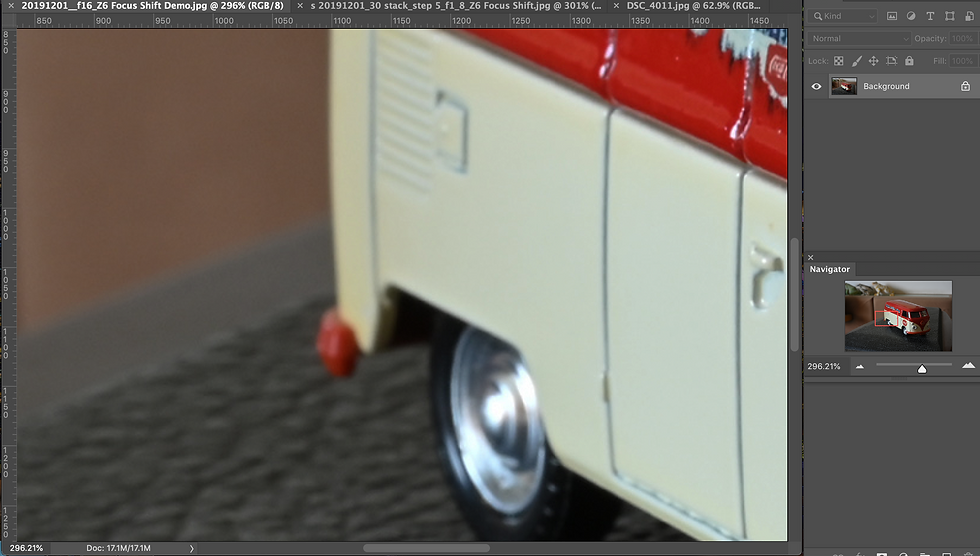Nikon Z 6 - The Focus Shift Advantage
- Andrew JK Tan
- Jan 12, 2019
- 3 min read
This is my first blog covering the FOCUS SHIFT capability of the Nikon Z 6. This capability is of course available in the Z 7 and in Nikon's DSLR world only the mighty D850 has this very cool & useful capability.
I will be blogging about this capability in future blogs so for this very 1st blog I just wanted to show the MOST important reason why I would use Focus Shift in Product / Commercial / Food / Table-Top Photography.
WHAT IS Focus Shift ?
Focus Shift is actually a capability where the camera CHANGES the Focusing Point AUTOMATICALLY to capture different focal depths. For each focal depth, different areas of the subject will be in focus.
WHY do Focus Shift ?
Capturing a series of images with different focal depths ENABLES the use of a technique during post production called FOCUS STACKING to create a final image where the entire subject is in focus (front to back).
Focus Shift allows the FASTEST way to capture the series of images required
Eliminates the need to use apertures like F16 & smaller (large aperture values) to maximize Depth Of Field (DOF). Using such apertures can impact the image quality due to Diffraction.
Allows the photographer to control the degree of bokeh WITHOUT impacting the focus of the entire subject. To me this IS the most useful reason / feature.
RESULTS comparing f1.8 VS f16
Nikon Z6 Unedited Aperture: f1.8 Focal Length: 50mm
f1.8 generated such a shallow DOF image that more then 3/4 of the toy vehicle including the background was not in focus. Having the background out of focus is great but could I get the entire toy vehicle in better focus by stopping down the aperture further ?

Nikon Z6 Unedited Aperture: f16 Focal Length: 50mm
f16 is the smallest aperture of the Nikkor Z 50mm f/1.8S lens. Even when captured at f16 which produced the maximum Depth Of Field, this time only the front half of the toy vehicle was in better focus while the rear half of the vehicle still had very soft focus.
However maximizing the depth of field using f16 also revealed much more of the background details which become distractions. The ultra soft f1.8 background was gone , so stopping down to f16 was definitely not the best solution.

Results using FOCUS SHIFT with the following setup & FOCUS STACKING using HELICON FOCUS
1. Aperture used: f1.8
2. Focus Shift Setup
- Capture 30 images
- Focus Step Width setting: 5

Now isn't it AMAZING , that I can now capture the entire toy vehicle in focus at an aperture of f1.8 AND still retain the soft f1.8 bokeh to mask the background distractions.
To me , this IS the most important feature / capabilily that I really love.


Screenshot of the Final image produced by stacking 30 images using Helicon Focus
Screenshot of the f16 single shot


Screenshot of the Final image produced by stacking 30 images using Helicon Focus.
Screenshot of the f16 single shot
IN SUMMARY
Hopefully this simple example demonstrates the power & how useful Focus Shift & Focus Stacking can be.
The whole process of capturing the 30 shots and focus stacking them using Helicon Focus is less than 10 minutes (including setup & stacking). Doing the same thing by manually changing the focus would be a lot more difficult and slower.
So watchout for more blogs on how I use Focus Shift that is available in the Z Series Mirrorless cameras.
Cheers,
Andrew



Comments